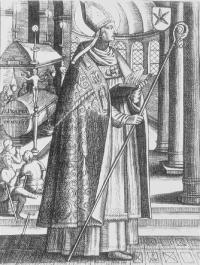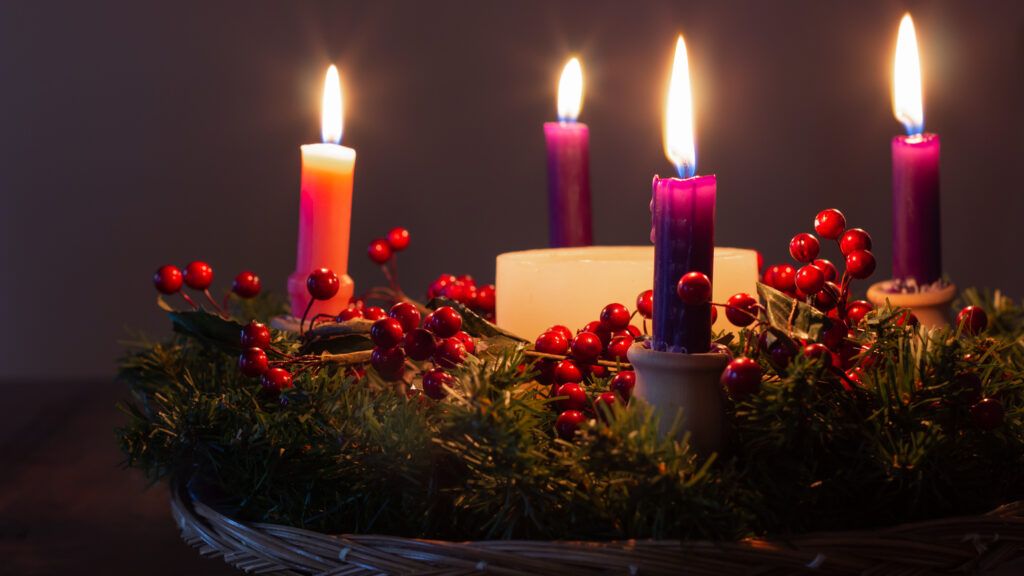The holiday season is filled with preparation. Shopping for presents, putting up decorations, getting ready for travel, preparing for guests, cooking a Christmas dinner… With so many things to do, the season can become a bit of a blur. Before we know it, it’s the day after Christmas. We haven’t had a moment to relax or reflect on this joyous time of year. Yet there is an aspect of the holiday season that allows us to do just that, in the weeks leading up to Christmas: Advent. You may know it from the dated calendars with treats behind them. But it has a lot more meaning than that. So, what is Advent?
What does Advent mean?
Advent comes from the Latin word adventus, which means “coming” or “arrival.”
It is a preparatory season before the celebration of Christ’s birth on Christmas. Some also see it as a preparation for the second coming of Christ.
READ MORE: Learn more about the meaning of Advent
When does Advent start?
The Advent season traditionally begins four Sundays before Christmas Day. So the start date changes every year. It always ends on Christmas Eve (December 24th).
The 2023 Advent season begins on Sunday, December 3rd.
READ MORE: Our Editors’ Favorite Advent Candles and Holders
What is the origin of Advent?
Pinpointing the true origins of Advent can be a little complicated. History has left us with some ideas.

Despite the many theories on when it originated, nothing is definitive. As J. Neil Alexander, a bishop and professor of liturgy and theology, puts it, “Each hypothesis is of continuing interest, but all contain serious flaws that make it impossible to claim with confidence a credible explanation of the origin of Advent.”
Perhaps it is comforting that Advent doesn’t have one source. People throughout history recognized this time of year to be holy and designated it so.
READ MORE: 10 Interesting Advent Facts to Get You in the Holiday Spirit
Is Advent in the Bible?
Some may be surprised to learn that the word “advent” is not in the Bible. However, various verses in Scripture focus on Christ’s arrival. While they may not mention it specifically, they get to the heart of what Advent means.
Here are some Advent Bible verses:
- For God so loved the world that he gave his one and only Son, that whoever believes in him shall not perish but have eternal life. —John 3:16
- “The days are coming,” declares the LORD, “when I will raise up for David a righteous Branch, a King who will reign wisely and do what is just and right in the land.” —Jeremiah 23:5
- Therefore the Lord himself will give you a sign: The virgin will conceive and give birth to a son, and will call him Immanuel. —Isaiah 7:14
- But the angel said to them, “Do not be afraid. I bring you good news that will cause great joy for all the people. Today in the town of David a Savior has been born to you; he is the Messiah, the Lord. This will be a sign to you: You will find a baby wrapped in cloths and lying in a manger.” —Luke 2:10-12
- She will give birth to a son, and you are to give him the name Jesus, because he will save his people from their sins. —Matthew 1:21
READ MORE: One-word Advent Prayers for a More Meaningful Season
How do you celebrate Advent?
Advent is celebrated by Roman Catholics, Anglicans, Episcopalians, Lutherans, and Protestants around the world. Each of these denominations has their own religious traditions. One of the more common practices includes the use of a wreath and candles.
The wreath is usually made of something evergreen, like fir or holy, and symbolizes eternal life. Four Advent candles of various colors go on the wreath and are lit each Sunday. Some people use white or red candles, though the more traditional colors are purple and rose-pink. The candles are multicolored because they adhere to the liturgical colors, or the colors associated with different themes by the Christian church.
READ MORE: What are the 4 Themes of Advent?
For example, purple candles are used for Advent and Lent because they represent humility, penance, and reflection— things that we focus on during the Advent season. Purple also represents royalty, a reference to Jesus as King. The single rose-pink candle symbolizes joy and stands as a reminder to rejoice in the coming of Jesus. The various colored candles truly get to the heart of the reason for the Advent season: prayerful reflection and joyful anticipation.
Will you and your family be celebrating Advent this season? How? What is Advent to you?
READ MORE: 10 Things You Might Not Know About Advent Calendars






